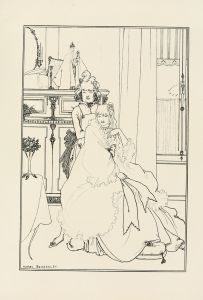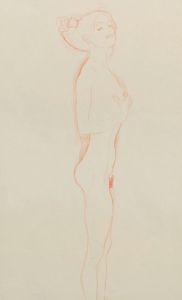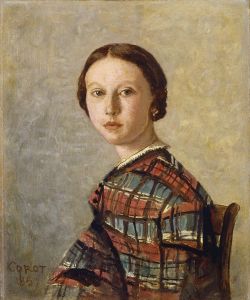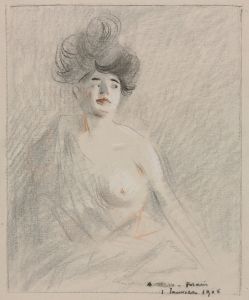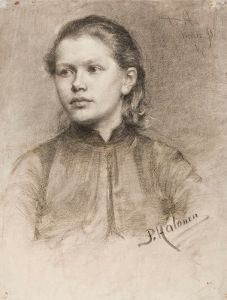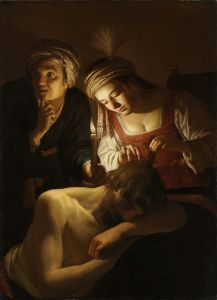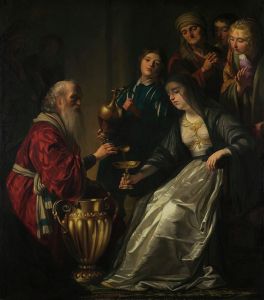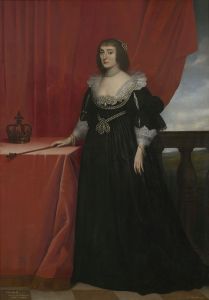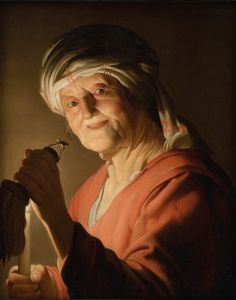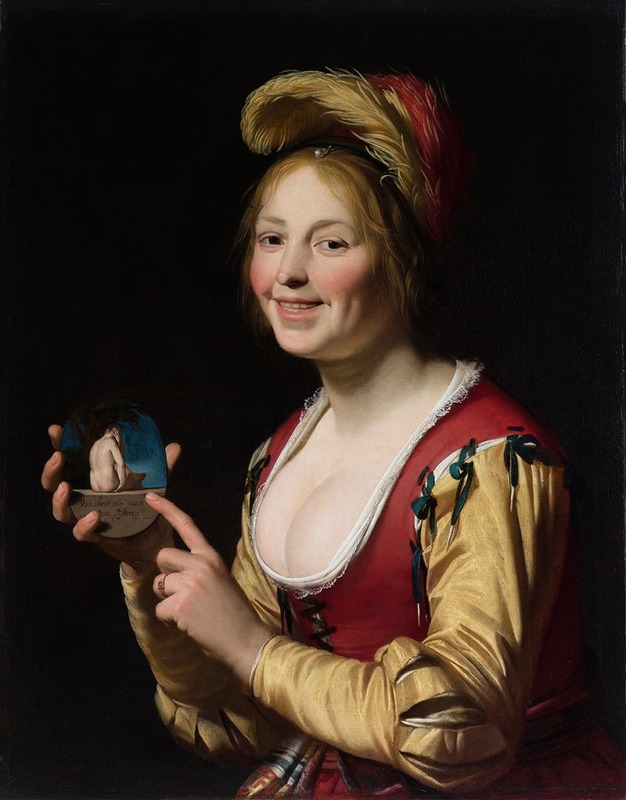
Smiling Girl, a Courtesan, Holding an Obscene Image
A hand-painted replica of Gerard van Honthorst’s masterpiece Smiling Girl, a Courtesan, Holding an Obscene Image, meticulously crafted by professional artists to capture the true essence of the original. Each piece is created with museum-quality canvas and rare mineral pigments, carefully painted by experienced artists with delicate brushstrokes and rich, layered colors to perfectly recreate the texture of the original artwork. Unlike machine-printed reproductions, this hand-painted version brings the painting to life, infused with the artist’s emotions and skill in every stroke. Whether for personal collection or home decoration, it instantly elevates the artistic atmosphere of any space.
"Smiling Girl, a Courtesan, Holding an Obscene Image" is a painting by the Dutch Golden Age artist Gerard van Honthorst. Created in the early 17th century, this work exemplifies Honthorst's mastery of chiaroscuro, a technique that uses strong contrasts between light and dark to create a sense of depth and drama. The painting is notable for its provocative subject matter, which reflects the artist's interest in genre scenes that often depicted lively, sometimes risqué, moments from everyday life.
The artwork portrays a young woman, often interpreted as a courtesan, smiling mischievously while holding an image that is considered obscene. The exact content of the image she holds is not clearly visible in reproductions, but its suggestive nature is implied by the context and the woman's expression. Her direct gaze and playful demeanor engage the viewer, creating an intimate and somewhat provocative interaction. This type of subject matter was not uncommon in Dutch art of the period, as artists often explored themes of morality, vice, and human behavior through allegorical or humorous depictions.
Gerard van Honthorst (1592–1656) was a prominent painter from Utrecht, known for his Caravaggist style, which he developed after studying in Italy. His works often featured dramatic lighting and lively figures, drawing inspiration from the Italian Baroque master Caravaggio. Upon returning to the Netherlands, Honthorst became highly successful, earning commissions from both local patrons and foreign courts.
The painting is an example of Honthorst's ability to blend technical skill with engaging storytelling. The use of light in the composition highlights the woman's face and the object she holds, drawing attention to her expression and the central theme of the work. The dark background further emphasizes the figure, creating a sense of immediacy and focus.
"Smiling Girl, a Courtesan, Holding an Obscene Image" is housed in the Louvre Museum in Paris, France. It remains a subject of interest for art historians and enthusiasts due to its intriguing subject matter and the insight it provides into the social and cultural attitudes of the Dutch Golden Age. The painting is also a testament to Honthorst's ability to capture the complexities of human expression and interaction within the framework of his time.





